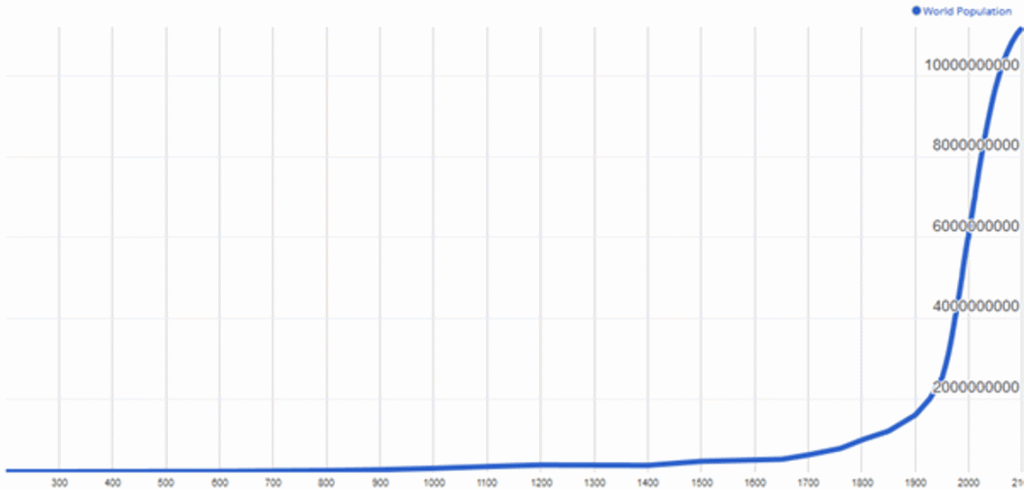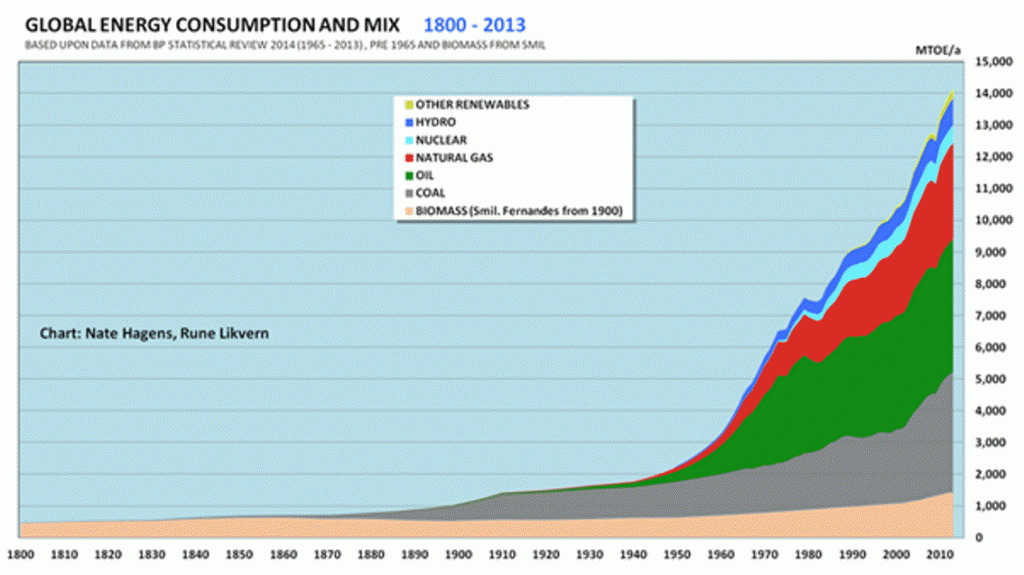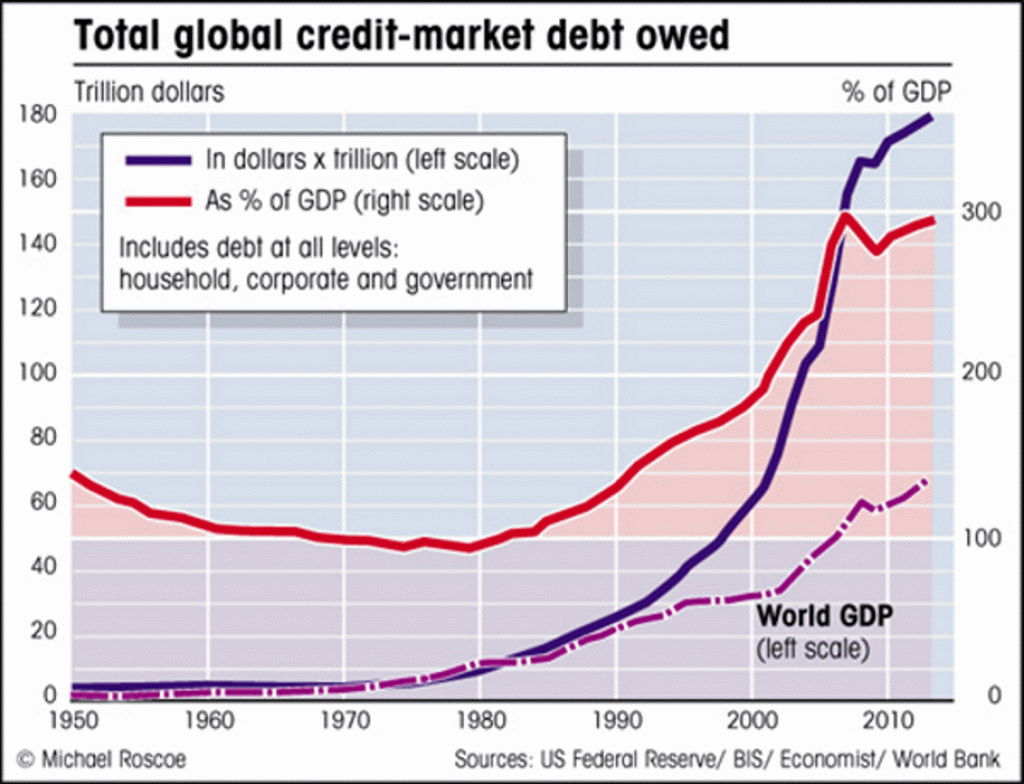The Connection Between Population, Energy and Debt
There are currently 7.4 billion people on Earth, with a typical daily net increase of 150,000. This rapid population increase was only possible through the discovery and use of large quantities of energy. In the chart below, it can be seen that the population started to take off at the beginning of the Industrial Revolution. This was the start of widespread coal use, later followed by the discovery of oil and gas.
Chart courtesy worldometers.info
The curve for energy (below) replicates that for population. In both cases, the exponential take-off occurred in the middle of the 20th century.
Abundant, cheap energy is the foundation stone of modern economies. It allowed large scale manufacture of steel and cement. Which in turn were used in building factories, homes and hospitals, farm equipment and the like. Energy was also crucial to the green revolution that allowed so much more food to be grown.
For example, large tracts of Brazil were too acidic to grow food. But after the addition of millions and millions of tonnes of lime to the soil, Brazil is now a net exporter of food.
Debt was used to speed up development. If one waited to pay for a car with all cash, it would be a long time before most people could afford one. However, with debt that car could be bought today. This in turn drags forward everything involved in making the car, thus growing the economy faster than otherwise. The chart below shows global debt since the middle of the 20th century.
The exponential growth in debt started around 1990, lagging population and energy growth by about 40 years.
The World Today
The growth in energy demand has slowed, as has the population growth rate. Population demographics have also changed in a way that inhibits growth. Fewer working age people and children (except in parts of Africa) and more old people nearing, or in, retirement. Older people have much of what they need and prefer to save rather than spend.
But debt has continued to climb. It is estimated to now be around USD200 trillion. The world is different today. But not to central banks. Their fundamental belief is that more debt will lead to more growth. It hasn’t yet and it won’t.
The exponential growth rates in energy consumption, population and debt cannot continue. And with the first two the rate of increase is already in decline. A new approach is needed to avoid a potentially catastrophic future. If it is left to the central banks we will all be at war, as that is good for economic growth apparently. Interesting times ahead.



